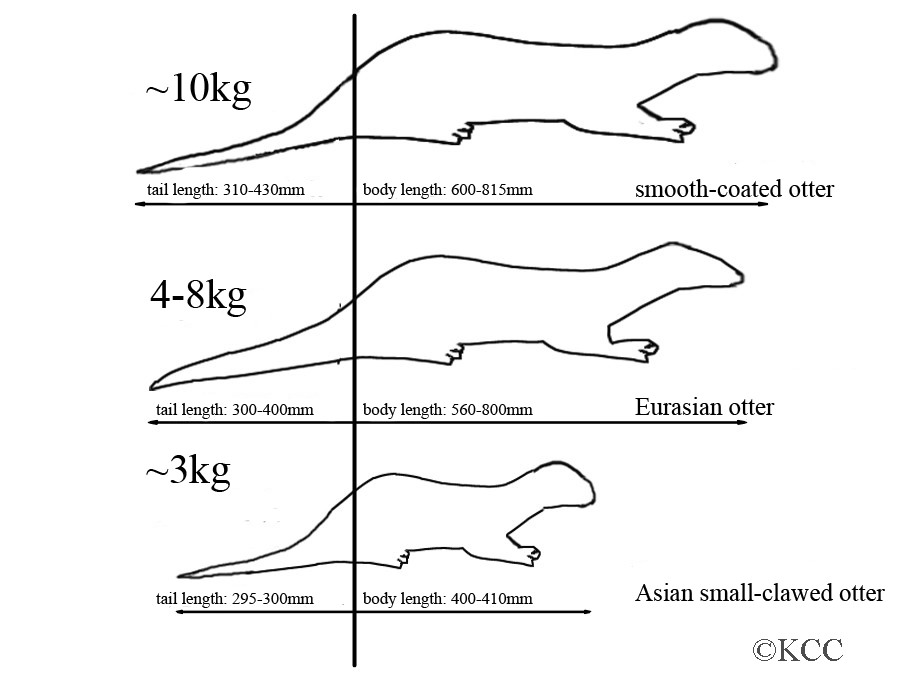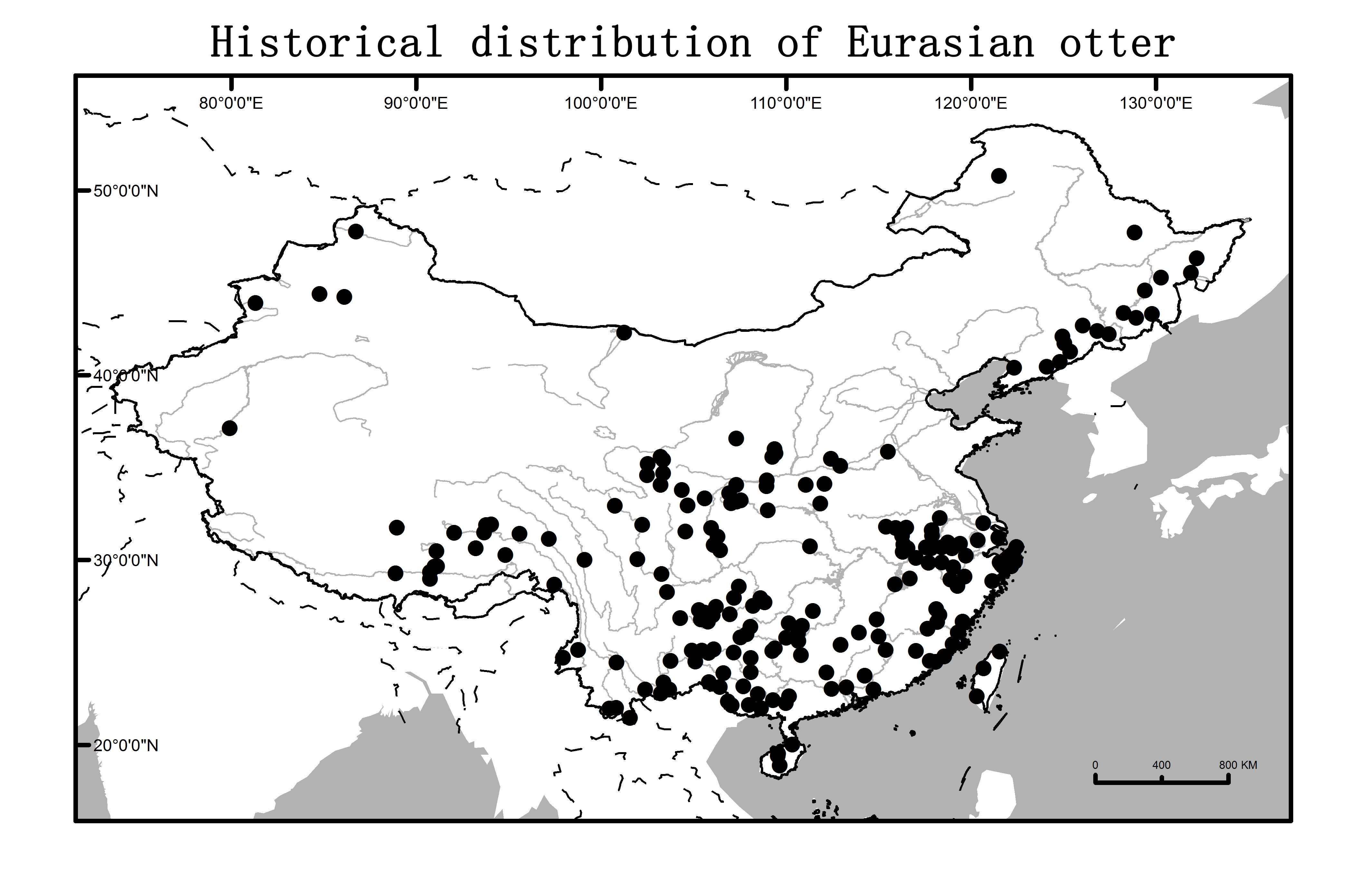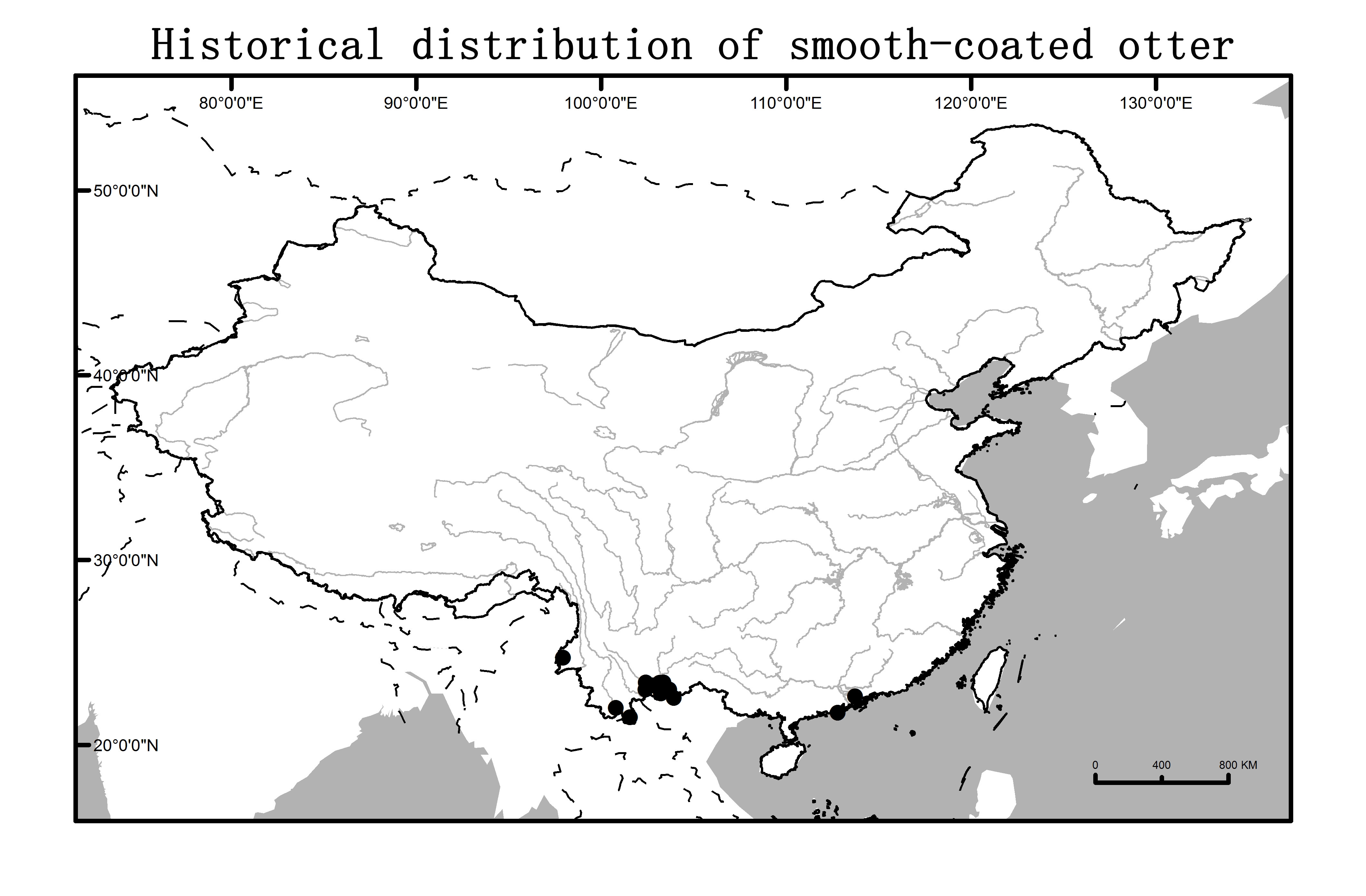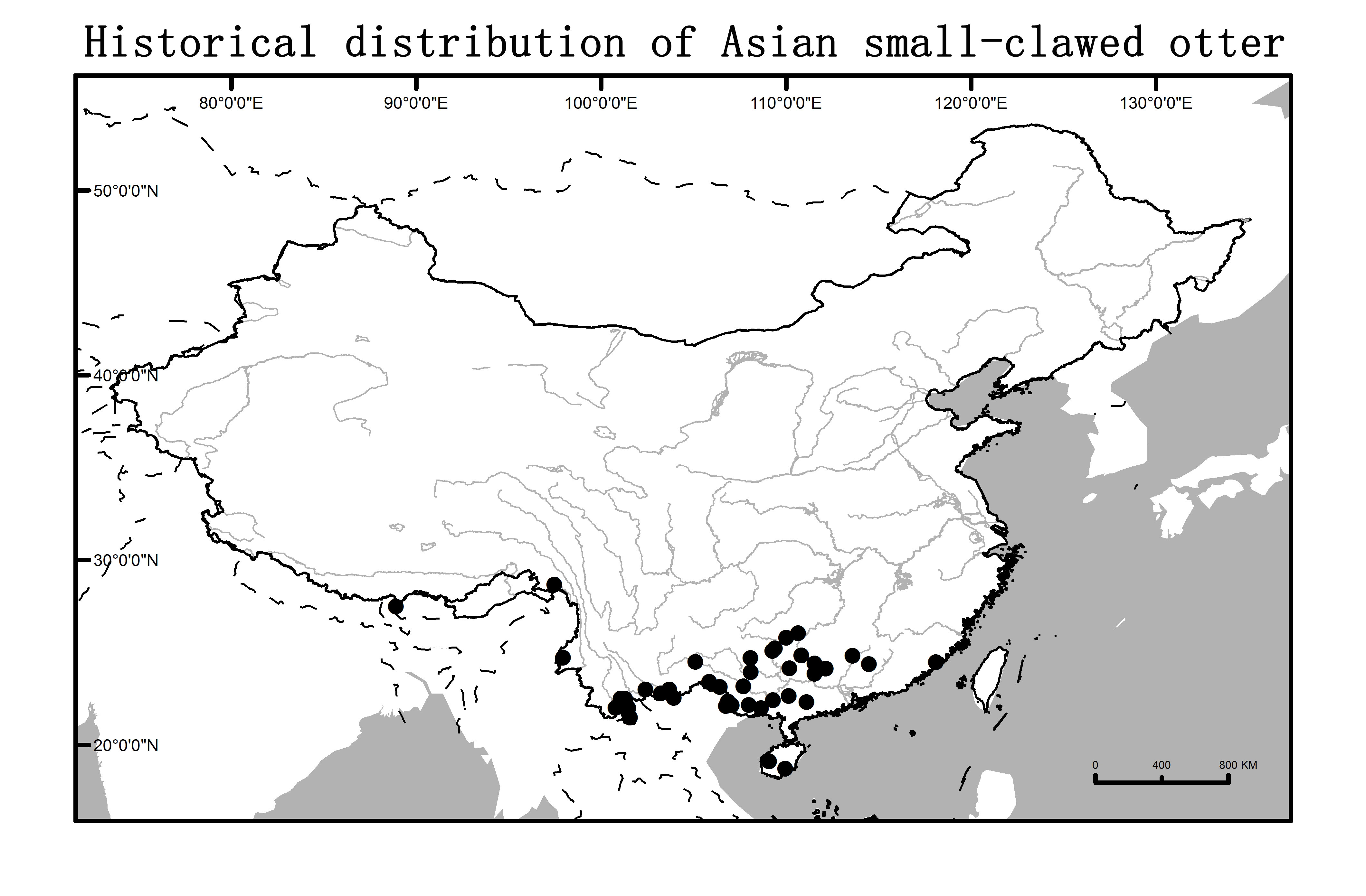A general introduction of the three otter species in China
To identify a species correctly is one of the essential skills for anyone who wants to be a qualified conservationist. However, one will always find some species within each wildlife group which are notoriously difficult to tell apart, and otters are one such group! To wade into identifying similar-looking species may make some casual naturalists back off, but once you dwell into the details many slowly learn to pick up the subtle (but obvious!) differences among these species, and welcome such taxonomic challenges with open arms.
Three species of otters are known from China: the Eurasian Otter (Lutra lutra), the Asian Small-clawed otter (Aonyx cinereus) and the Smooth-coated Otter (Lutrogale perspicillata). Although only three species are involved, it is by no means a straight forward job to distinguish them. Not long ago, a research team studied five otter specimens deposited in various US and Europe museums labeled as Smooth-coated Otter using molecular techniques. Surprisingly, NONE of these specimens turned out to be a Smooth-coated Otter, and instead consist of 3 other otter species! (Barbanera et al. 2016) This study illustrates that otter identification is no easy task, and even museum taxonomists with the chance of inspecting specimens closely still make mistakes. Readers can imagine the challenge of conservationists trying to identify otters in the field or of a camera trap photo!
Let me introduce to you how to identify these look-alike creatures.
Shape (biologists called this “Morphology”)
If you are lucky enough to see an otter in the wild, its size is one of the key features for identification, particularly when China has the world’s smallest otter - the cat-sized Asian Small-clawed Otter, and the largest otter in Asia - the dog-sized Smooth-coated Otter.
Figure 1 compares the weight, body length and tail length of the 3 species. It is important to note that when interviewing local villagers, they usually can only tell you the weight of the otter, rather than the length of the animal they saw. You may find it odd, but asking local villagers about body length of animals always confuse them, because to them, the question is like asking them, “Congratulations to your new born baby! How tall is your baby?”

Figure 1. Modified from Gao et al. (1987)
But conservationists are not always so lucky in the field, otters are often observed from a distance, or are recorded by a camera trap we set; in which case it is difficult to determine its actual size. Therefore, the head and tail shapes are also important features for identification. The Eurasian Otter has flattened head and rounded tail, while the Asian Small-clawed and Smooth-coated Otters have short blunt heads and flattened tails.
Heads
.jpg)
Tails.jpg)
Nose
In the exceptional case that you are close enough to observe their nose, which is considered the most reliable identification feature of Asian otters, then you will notice the naked part of the nose (known as rhinarium by scientists) of Eurasian otter is squarish with protrusions at the top and bottom; while the Asian Small-clawed and Smooth-coated Otters have flattened rhinarium with little protrusions.
.jpg)
Since both the Asian Small-clawed and Smooth-coated Otters have short rounded head, flattened tail and squarish rhinarium, how can we tell them apart if size cannot be determined? Luckily there is another key feature – the claws. The Asian small-clawed Otter, as the name suggests, have almost invisible claws, allowing it to search for its favourite food, crabs, in rock crevices; whilst the Eurasian and Smooth-coated Otters has prominent claws for catching slippery fish.
Claws .jpg)
Distribution and Habitat
Habitat preference is another important factor to distinguish different otter species. In most parts of China the Eurasian otter is the only species present, but in the tropical region it is more complicated. We are still not clear about the exact distribution of the Asian Small-clawed Otter, and the Smooth-coated Otter has not been found for many years. All three species used to occur in the border regions of Yunnan Province, but their current distribution needs to be updated.



The Eurasian Otter appears to be most adaptable and can be found in a wide range of habitats, from the coasts, lowland rivers to montane streams as long as the water is full of fish. The Smooth-coated Otter prefers the lower reach of river and mangrove-lined estuaries. The Asian Small-clawed Otter can only be found in montane streams in China, but occurs in floodplain and even farmland in Southeast Asia.
Diet
Otter poo is known as “spraints” by scientists, and is often deposited on prominent areas which enable researchers to collect them for analysis. Therefore, many countries have conducted extensive studies on otters’ diet, but this is not the case for China where otters are rarely studied. The Eurasian and the Smooth-coated Otters are both fish-eaters, but the Smooth-coated Otter tend to hunt larger fish. The Asian Small-clawed Otter mainly feed on crabs. As a result, spraint analysis is often used to aid otter identification.
Spraints.jpg)
In addition to the above-mentioned differences in morphology, distribution, habitat and diet, their habits would also help us identify otters. The Eurasian otter tends to be solitary whilst the small-clawed and Smooth-coated Otters are social animals living in family groups. In summary, it is important to pay attention to details, and make your identification by a holistic judgement based on all existing information.
Author: LI Fei, Conservation Officer, Kadoorie Conservation China
References:
Barbanera, F., Moretti, B., Guerrini, M., Al-Sheikhly, O. F., & Forcina, G. (2016). Investigation of ancient DNA to enhance natural history museum collections: Misidentification of smooth-coated otter (Lutrogale perspicillata) specimens across multiple museums. Belgian Journal of Zoology, 146(2), 101–112.
Li, F., & Chan, B. P. L. (2017). Past and present: the status and distribution of otters (Carnivora: Lutrinae) in China. Oryx, 1–8. https://doi.org/10.1017/S0030605317000400

